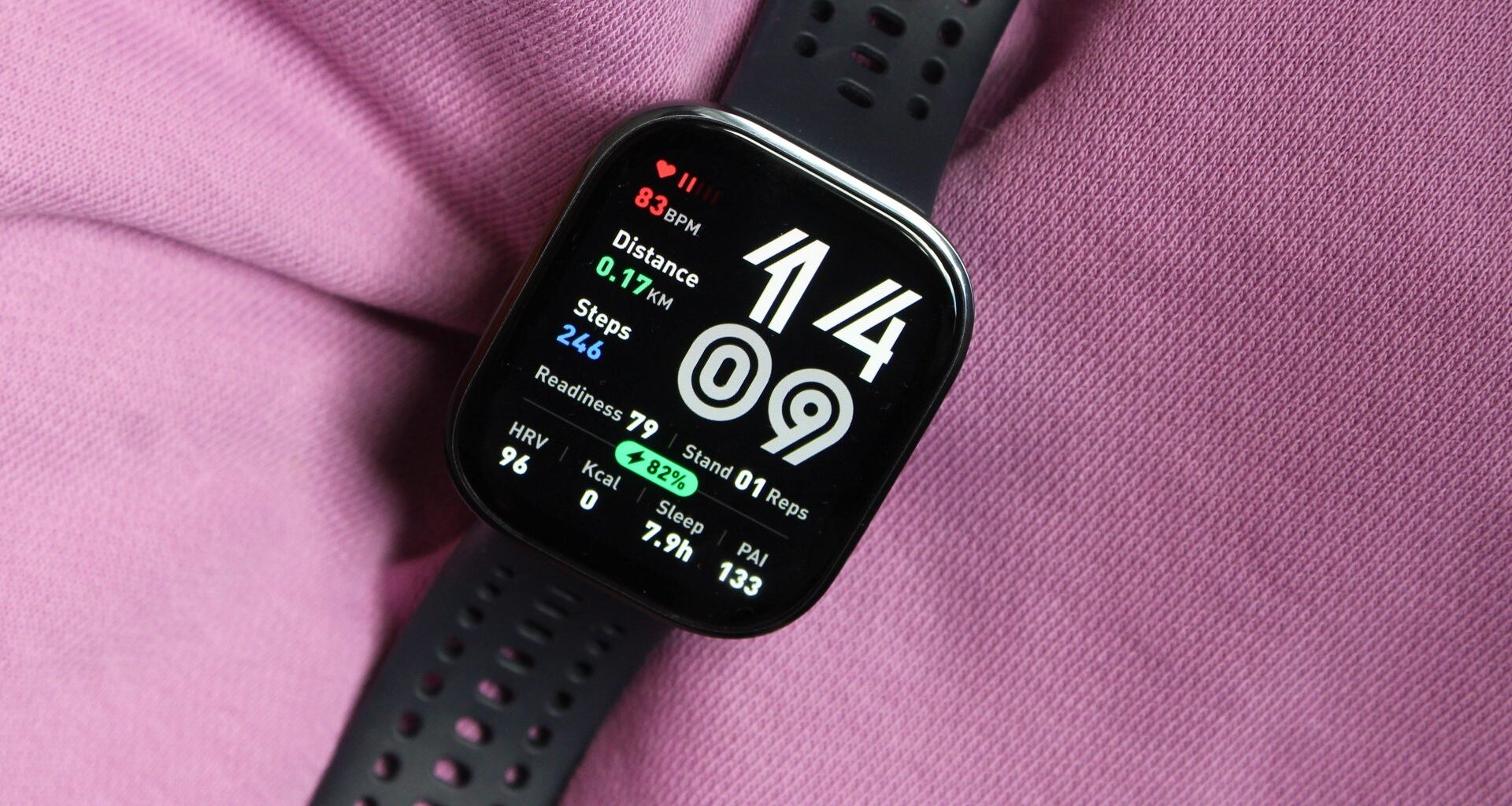Offline mapping and a refined design make the Bip 6 an enticing budget option
The Amazfit Bip 6 is one of the best budget smartwatches available. With an improved display and a healthy blend of smartwatch, health, and fitness features, this is a package that feels anything but cheap. In true Zepp fashion, there are some software oddities to contend with, but that doesn’t detract from a smartwatch that still punches above its price in the best way possible.
The AMOLED upgrade is welcome
Good balance of features and accuracy
Offline maps at this price(!)
The companion app is a little busy
Some might prefer a smaller case
Some unreliable fitness insights
In the increasingly vast array of Amazfit wearables, the Bip has always been a line that provides more for less. These budget options haven’t always featured the brand’s latest sensor technology, highest-quality display, or most premium case materials.
This was true of the last-gen Bip 5—a watch we rated 4/5 stars in our review. It’s still true with the latest edition, the Bip 6. Compromises, after all, are still to be expected even with the best budget smartwatches.
Yet, with the 2025 edition, some of our biggest gripes appear to have been addressed. Amazfit has improved the design and upgraded smarts, proving once again that you don’t have to spend the earth to pick up a smartwatch that looks and feels great on the wrist. Here’s our full review.
Price and competition
Again, affordability has been the name of the game since the first Bip—and that hasn’t changed for the Bip 6. If you want one, you’ll only have to shell out $79, and that means it actually comes in less than the Amazfit Bip 5 ($89). That’s quite remarkable, considering what we’re seeing at the top end of the smartwatch market, with near-universal price increases accompanying new generations.
Advertisement
The main competition for the Bip 6 comes from other Amazfit devices and familiar budget rivals, such as Xiaomi, Honor, and Huawei. In Amazfit’s range, the Bip 6 sits just below the Amazfit Active 2 ($99), another feature-rich option that offers a bit more in terms of smartwatch features.
It’s also competing with affordable options like the Redmi Watch 5 ($89) and the CMF Watch 3 Pro from Nothing ($99), which retails for $69 and was a standout performer in our testing.
Design and display
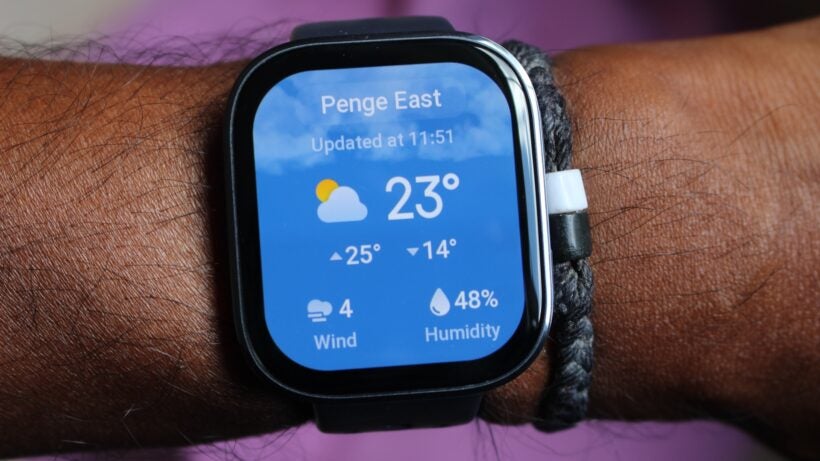 Credit: Wareable
Credit: Wareable
The Bip 5 was a pretty inoffensive-looking, 45mm square smartwatch made of plastic with a TFT screen. The Bip 6 is a slightly larger 46mm square smartwatch that seeks to refine a familiar Bip design, adding aluminum and introducing an AMOLED display.
The TFT screen has previously been a sign of the Bip’s budget status, but with other affordable smartwatches now adopting AMOLED displays, the Bip 6 receives the same treatment. The result is a smartwatch that instantly feels less budget. While it’s roughly the same size as the Bip 5’s display, it’s richer, more colourful and so much nicer to interact with.
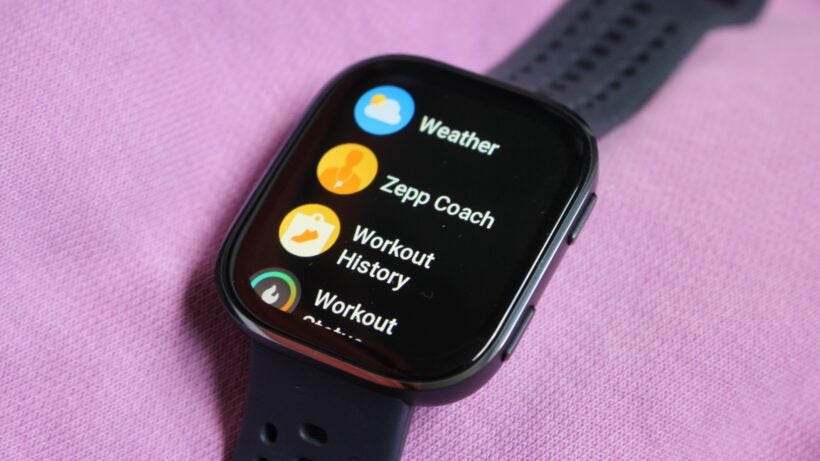 Credit: Wareable
Credit: Wareable
Advertisement
There are more changes, too. Zepp has added an extra physical button, providing a quick shortcut to modes like workout tracking, and it’s a useful addition overall. Adding a button, some metal, and that AMOLED has not increased in thickness either. It’s slimmed down from 11.2mm to 10.45mm, and, while it’s technically slightly heavier now, the difference isn’t really noticeable.
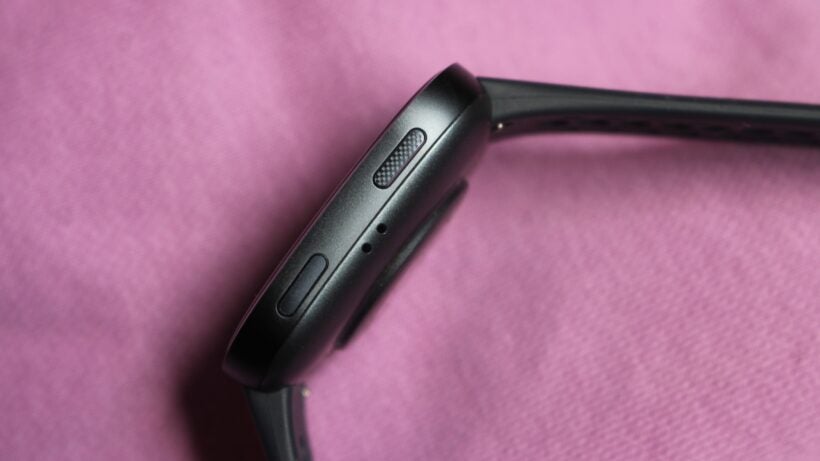 Credit: Wareable
Credit: Wareable
It’s a smartwatch that really stands out on your wrist, so those with smaller wrists might prefer something a bit dinkier. The strap it comes with is easily removable and is a typical silicone strap—snug-fitting yet quite comfortable to wear throughout the day and even while taking the Bip 6 to bed.
While there’s a trend among high-end smartwatches to be dive-friendly, that isn’t the case with the Bip 6. It’s waterproof up to 50 meters like the Bip 5, so you can wear it confidently while swimming, running in the rain, or taking a shower. At this price, that’s perfectly fine.
Battery life
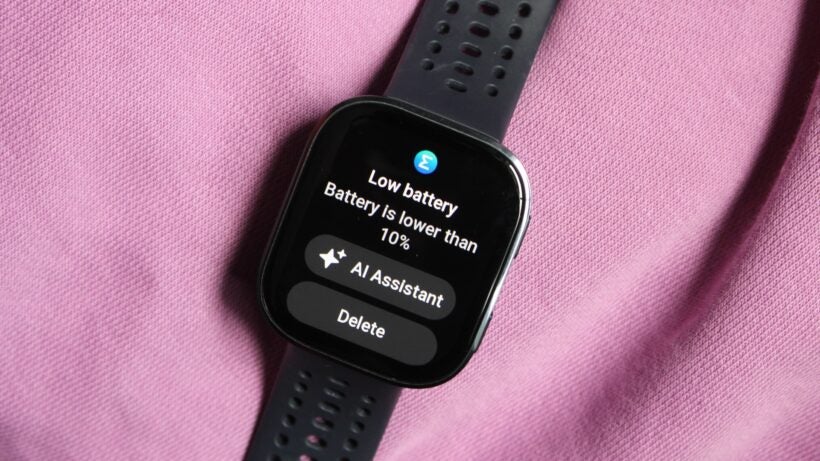 Credit: Wareable
Credit: Wareable
Zepp has upgraded to a 340mAh battery in the Bip 6, likely to compensate for the more power-consuming display. Fortunately, battery life remains reliably good.
Advertisement
Zepp says the Bip 6 can last 14 days in typical usage, compared to 10 days for the Bip 5. Under heavier usage, the battery life increases from 5 days to 6 days. However, in battery saver mode, it remains the same at 26 days. If you’re making good use of the built-in GPS, the GPS battery life is an impressive 32 hours.
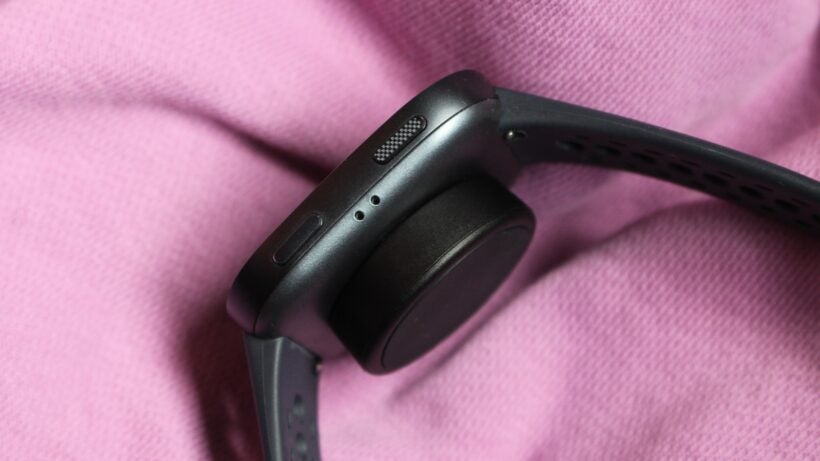 Credit: Wareable
Credit: Wareable
Our testing indicates that you can go beyond the 10 days promised on the Bip 5. However, with regular use of features like continuous health monitoring, sleep tracking, notifications, and sports tracking, it actually stayed close to the same 10 days. If you choose to enable the always-on display mode, that AMOLED significantly impacts battery life, reducing it to less than a week.
Daily battery drain generally reached 10%, with a 3-4% decrease overnight. During a 30-minute GPS session, the battery dropped by 6%, indicating a much shorter GPS battery life than advertised.
I never found the battery drain to be seriously problematic, and, although there isn’t a quick charge mode, it charges reasonably quickly when it hits 0%. You’ll just need to use your USB-C cable to connect to the proprietary charger, as Zepp doesn’t include one in the box.
Tracking performance: Fitness, health, and sleep
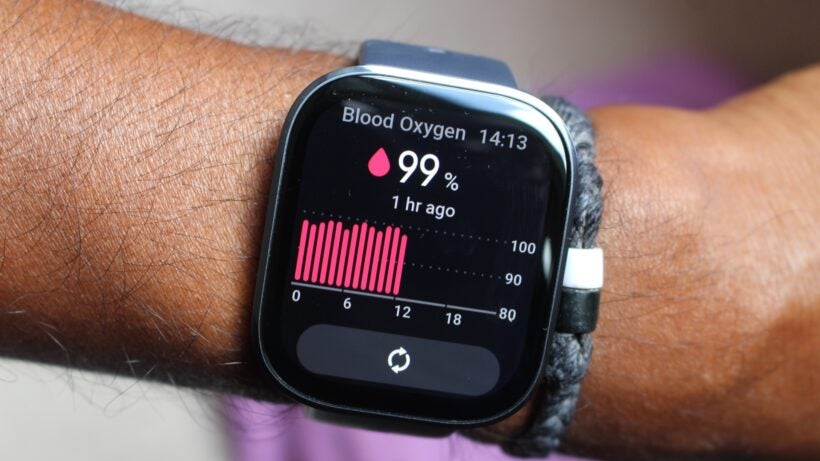 Credit: Wareable
Credit: Wareable
Advertisement
The Bip 6, like previous Bips, will function as a fitness and sleep tracker and include some health features that aren’t medical-grade or regulatory approved, unlike the more expensive smartwatches.
As a fitness tracker, you’ll monitor your steps, stand time, and view data like distance covered and calorie burn estimates. You’ll receive reminder prompts to keep you moving, and PAI Health scores will indicate when you’ve regularly raised your heart rate during exercise.
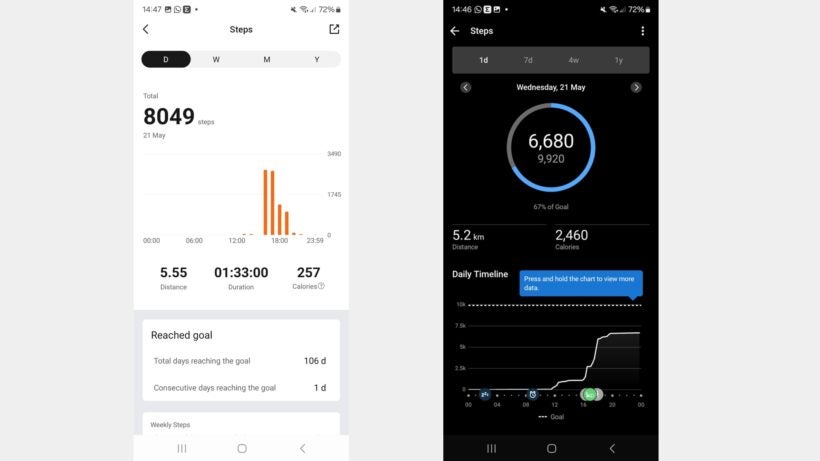 Credit: Wareable
Credit: Wareable
The activity widget is easy to use for tracking your progress, and it also supports viewing progress on compatible watch faces. We’ve worn it alongside two other fitness trackers, and on some days, the total daily step counts and distance covered were similar. However, there were also days, as shown above, where they varied quite a bit from each other.
Sleep tracking performance
Taking the Bip 6 to bed gets you data and you see sleep scores, daily sleep insights and a breakdown of sleep stages. We found it had a tendency at times to take a bit longer to register when we’ve fallen asleep, though sleep scores and sleep duration were similar to two other sleep trackers.
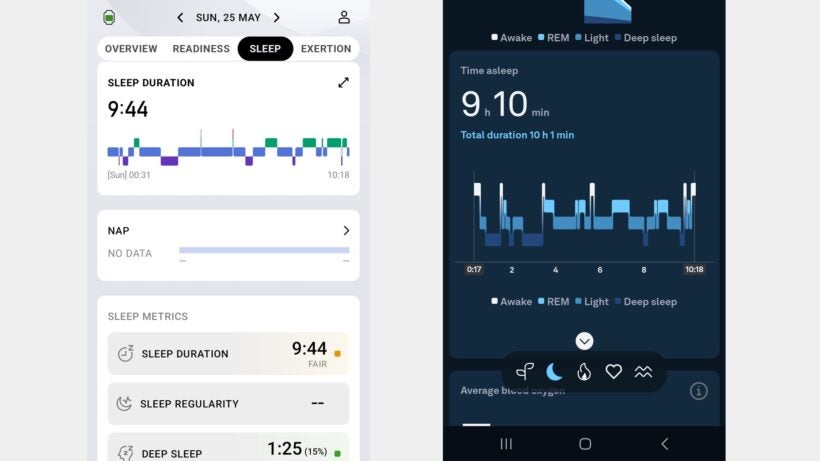
Advertisement
Additional metrics recorded such as respiration rate were similar too with sleep heart rate to trend trending higher by a few BPM, which isn’t something to be too alarmed about.
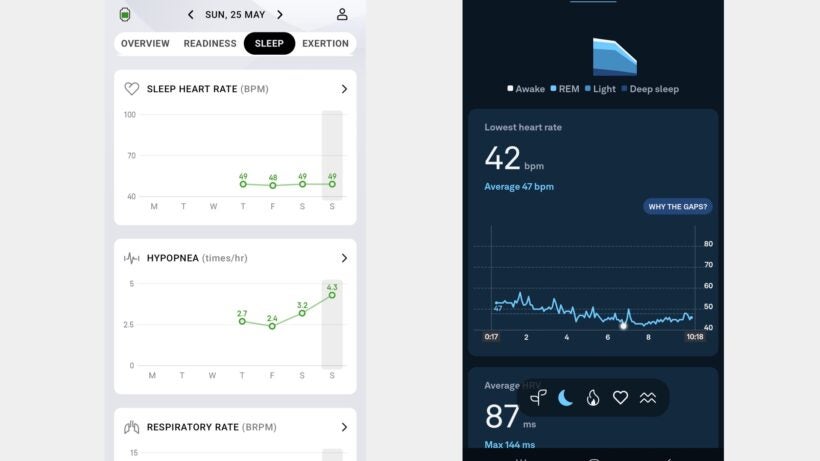
Health features and tracking
For health tracking, you’re receiving a device that can continuously monitor heart rate, stress, and blood oxygen saturation. You can take immediate measurements of these metrics and set up alerts for high or low heart rate, stress levels, or blood oxygen saturation.
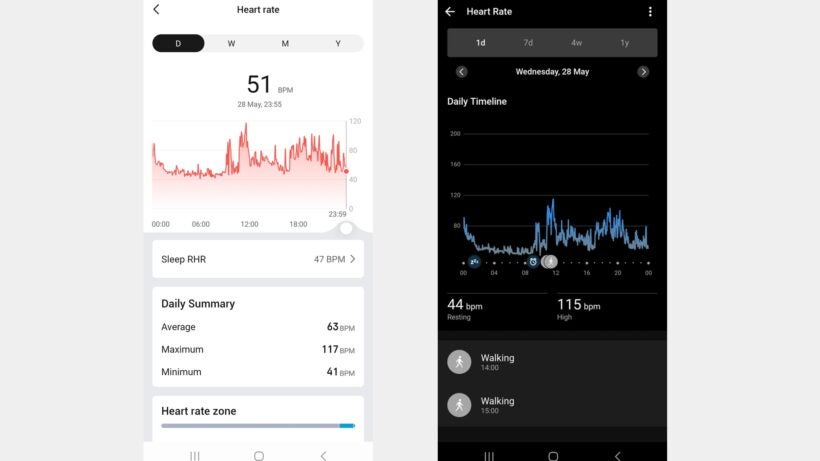
The reliability of continuous heart rate monitoring generally indicates how accurate the measurements from the optical sensor on the back of the watch are. We observed resting heart rate readings within 2-3 BPM of other wrist-worn trackers on most days, but there were also times when it reported higher average readings.
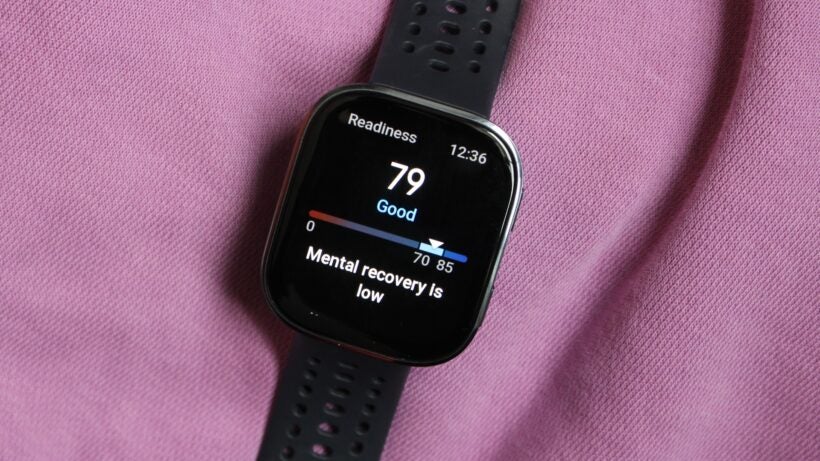 Credit: Wareable
Credit: Wareable
Advertisement
Zepp’s Readiness insights, which are based largely on data captured during sleep seemed in general to a be a lot more positive about our preparedness to take on the day compared to rival devices.
Exploring your health and fitness data can be a bit overwhelming, especially the presentation in the companion app, which, after recent updates, seems to have gotten a bit cluttered again. Luckily, you can at least sync that data to Apple Health and Google Health if you want or need to.
Sports tracking: GPS, workout HR, and mapping
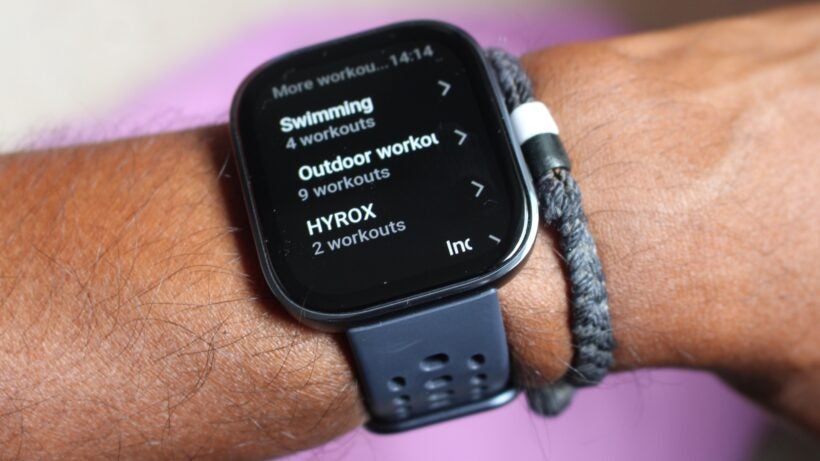 Credit: Wareable
Credit: Wareable
Zepp doesn’t shortchange you on sports features, either. It offers an affordable way to get a smartwatch with built-in GPS supporting the five main satellite systems, can automatically recognize strength training movements, and allows you to create workouts that can be synced from the app.
Additionally, you can pair external Bluetooth heart rate, running, and cycling sensors with it, and you can share data with services like Strava, Adidas Running, TrainingPeaks, and the navigation app Komoot. That’s crucial, considering the inclusion of offline map support.
There are well over 140 sports profiles to choose from, including dedicated modes for activities like running, cycling, pool swimming, tennis, and a Hyrox race mode designed for individual, doubles, or relay events. All in, it’s a very feature-packed sports tracker for the price.
Advertisement
GPS tracking performance and mapping
Regarding GPS performance, the Bip 6 doesn’t offer dual-frequency GPS support, which is increasingly available on other smartwatches. So, unsurprisingly, when used alongside a dual-frequency watch during running, it underreported distance by a relatively significant amount. Additionally, GPS tracks often showed it veering off course even in generally good GPS conditions.
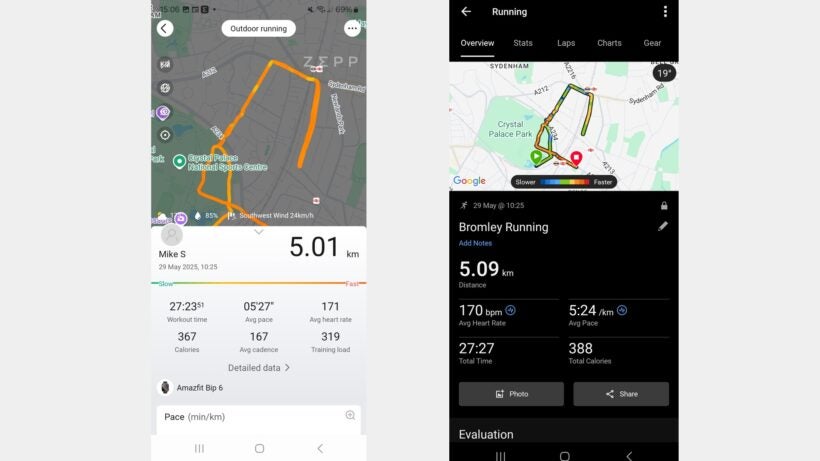 Credit: Wareable
Credit: Wareable
Yet, that outdoor tracking is boosted massively by the addition of free offline maps. You simply don’t find offline maps on a watch that costs less than $100, so it’s a huge reason to consider the Bip 6—even if there are some compromises compared to a full-fledged Garmin watch.
It’s mostly limited by the fact that you need to sync sections of a map to your watch. Given the limited storage on the Bip 6, you’ll be resigned to choosing the areas or locations you mainly want to explore.
While mapping support isn’t the best you’ll find on a smartwatch and can be a little sluggish at times, it still performs nicely—especially since the Bip 6 has a big enough screen to make surveying surroundings easy.
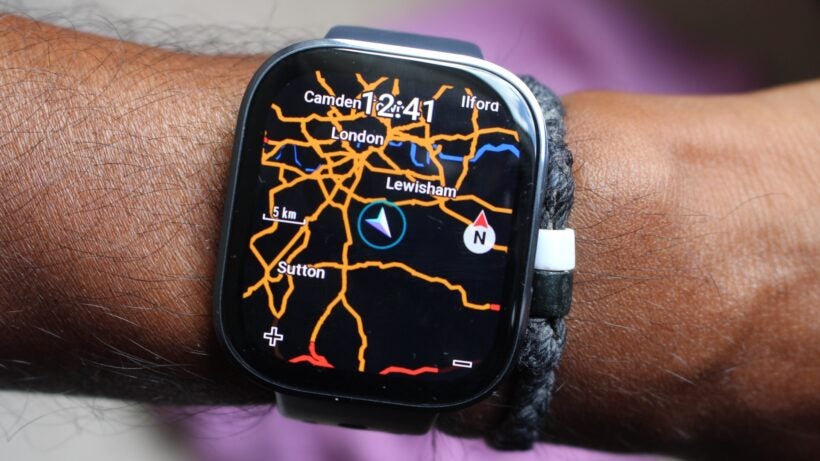 Credit: Wareable
Credit: Wareable
Advertisement
You can zoom and move around the app using virtual buttons, and also choose between dark and bright map styles. Supported outdoor modes include a map screen as an extra data display, and there is both navigation and route import support to enhance the Bip 6’s capabilities as an affordable outdoor watch companion.
Swim tracking and HR comparisons
The Bip is now also swim-proof, with dedicated swim tracking for pool activities. It accurately tracked swims when tested against two other dependable pool swim trackers.
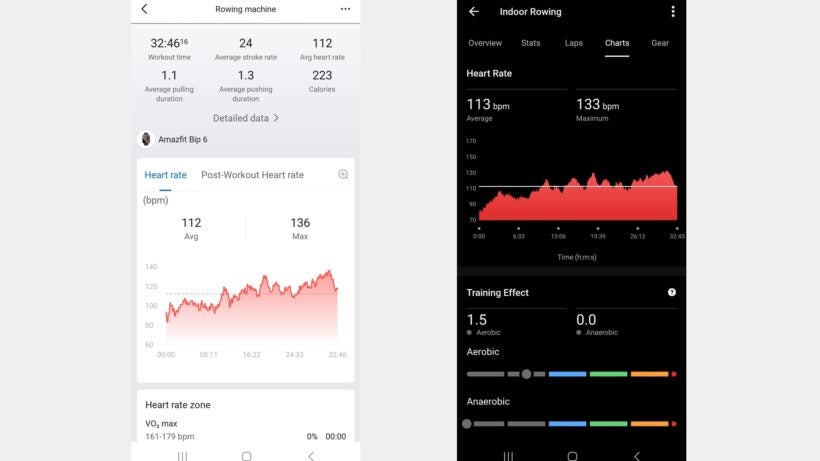 Credit: Wareable
Credit: Wareable
Heart rate monitoring during exercise has generally performed well, especially for steady-paced workouts like running and indoor rowing. It also handled moderately intense workouts effectively. However, for high-intensity sessions, it is (as ever) recommended to pair an external HR sensor for tip-top accuracy.
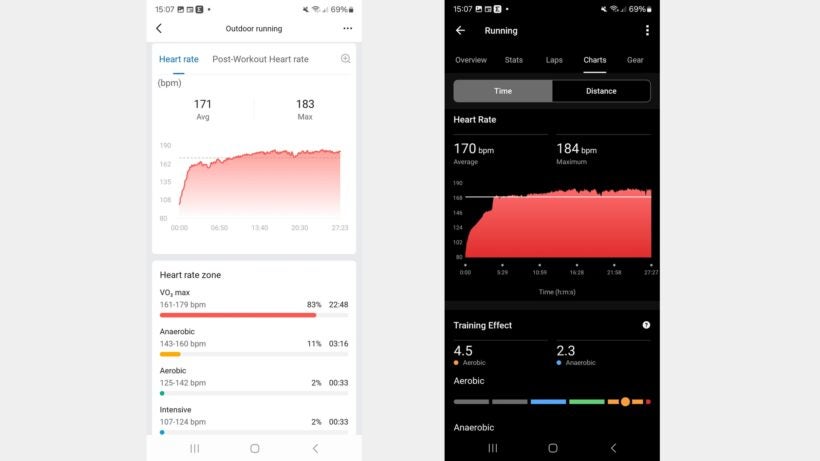 Credit: Wareable
Credit: Wareable
Training insights available include monitoring your training load, providing VO2 max estimates, and suggesting optimal recovery time.
Advertisement
How much we’d trust these insights is another matter. The recovery advice seems somewhat cautious, while VO2 max estimates appear more dependable when paired with a heart rate sensor.
Smart features and OS
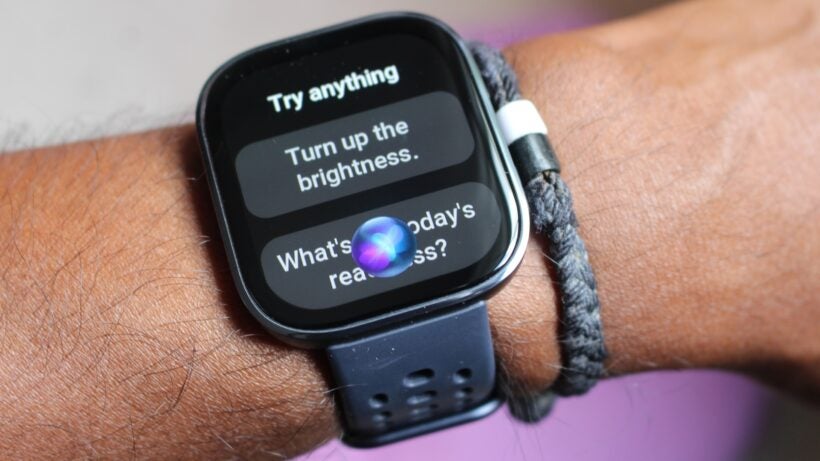 Credit: Wareable
Credit: Wareable
The Bip 6 unsurprisingly doesn’t perform as well as the best smartwatches when used for non-tracking purposes. It lacks features like payments, a music player, or popular third-party apps, and it’s mostly similar to what was available on the Bip 5.
There are some new additions though, like the very Garmin-esque morning updates and Zepp’s Flow AI assistant. Once set up, that assistant can be summoned by pressing the top physical button. You can ask it questions like what’s coming up on your schedule and to add events to your calendar. You can also use it to set timers and check progress during workouts.
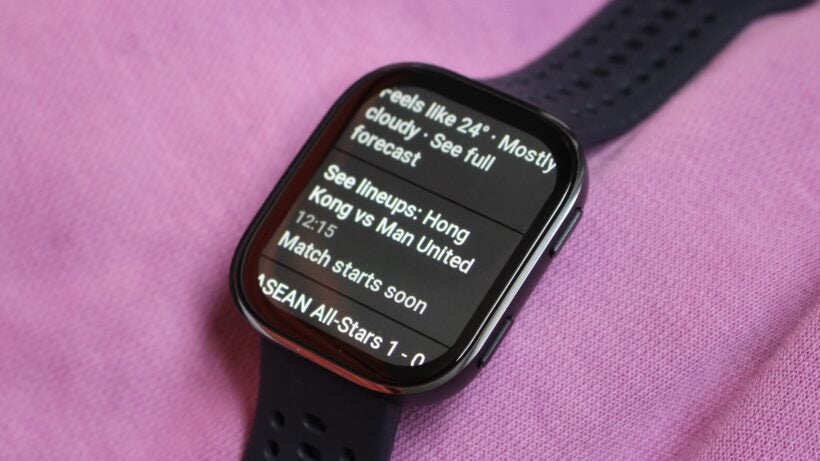 Credit: Wareable
Credit: Wareable
Where things become a bit more advanced is when you’re asking it for suggestions on a meal or to respond to some app notifications. This is where a few issues start to emerge.
Advertisement
We asked it to suggest a healthy dinner, and it asked if we wanted the ‘what to eat’ app to open. That app did not open. When we used it to get more information about a sporting event, it asked if we wanted to start a workout related to the event. So, clearly, this AI assistant is still a work in progress.
If you want a smartwatch that can display notifications, record voice memos, control music from native and third-party apps, has access to an app storefront, and you like the idea of having a find my phone mode, then the Bip 6 offers a more than satisfactory performance. Especially compared to what other similarly priced watches can offer on this front.

